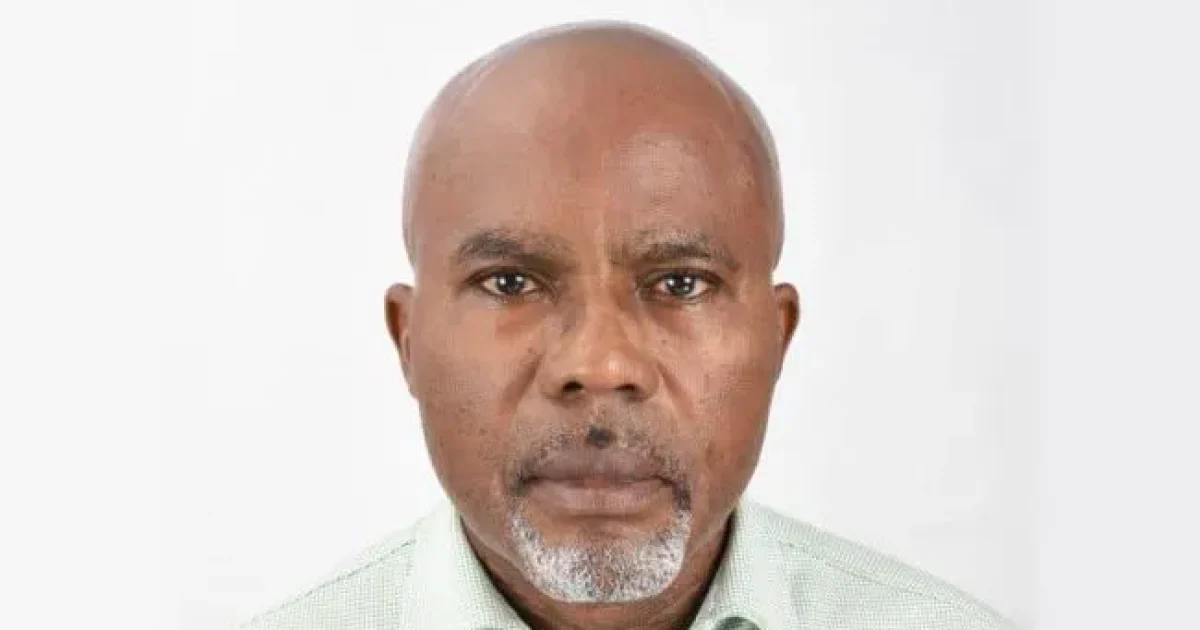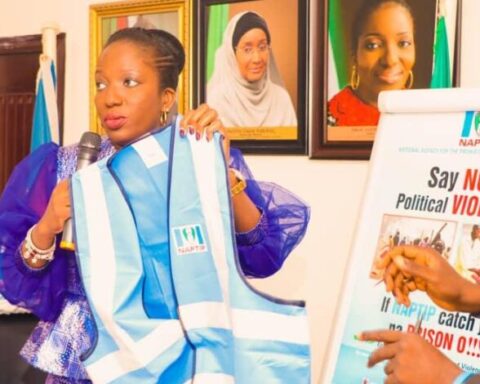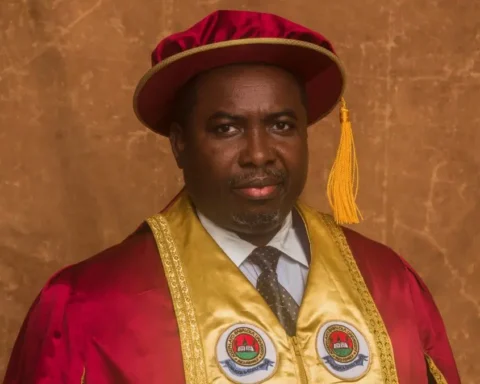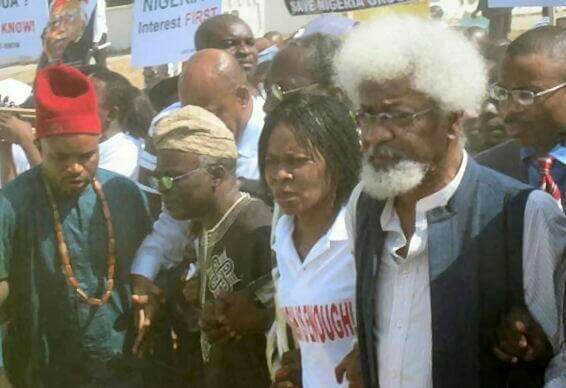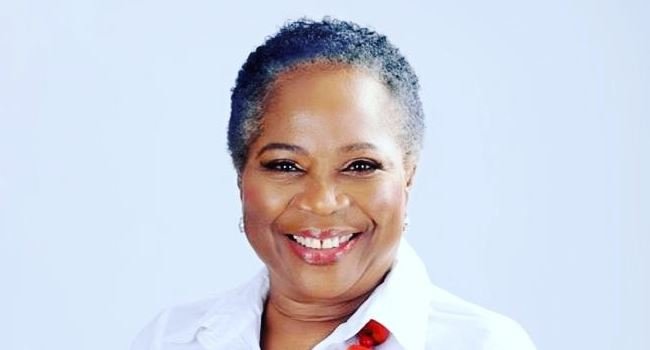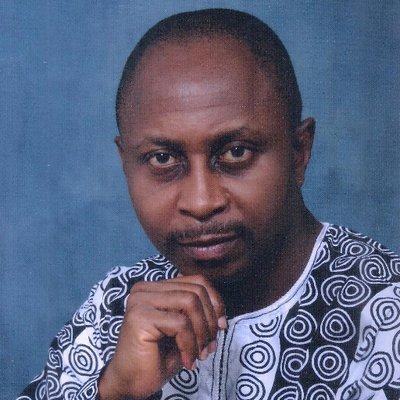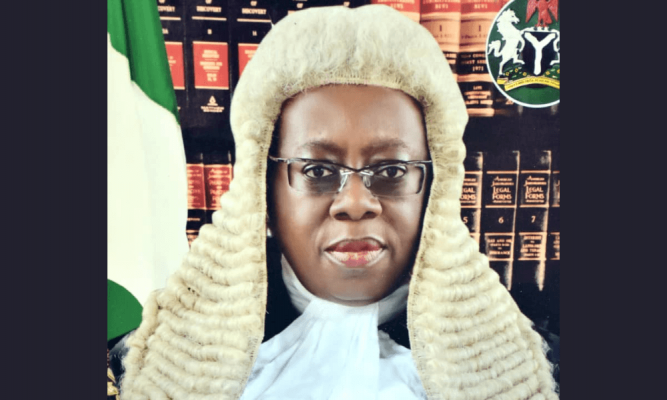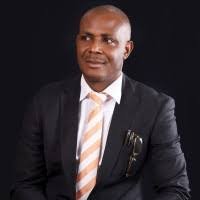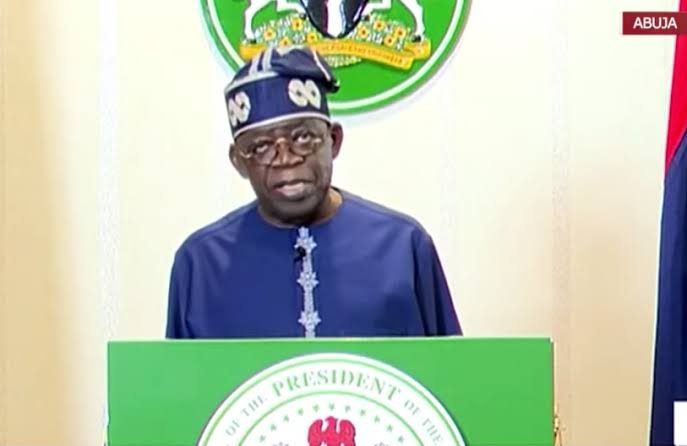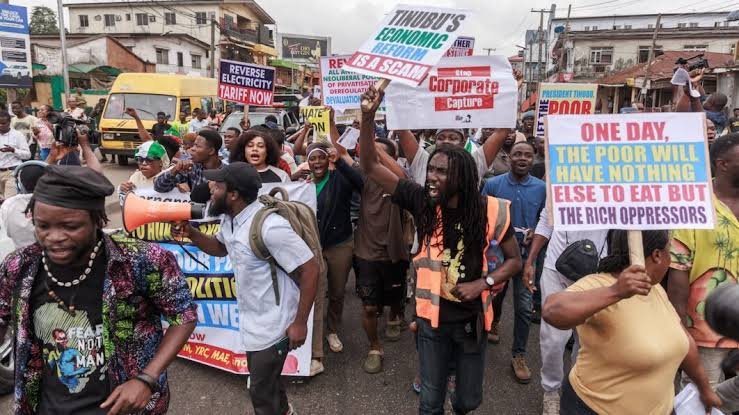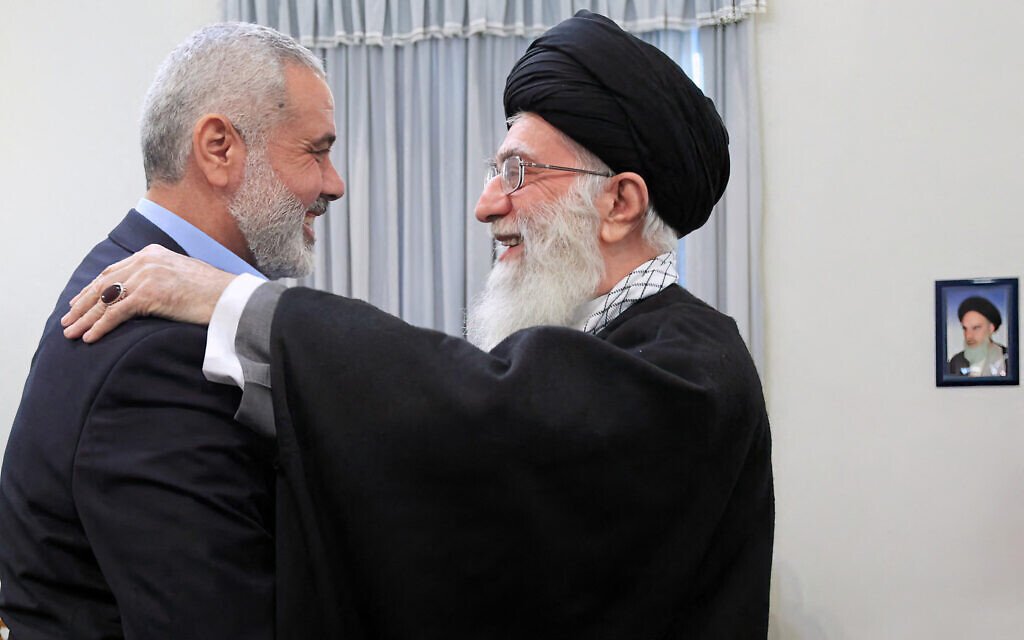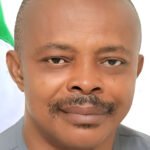CALAMITY of unimaginable proportion will befall this already fragile country if the economic reform programme of Nigeria’s president, Alhaji Bola Ahmed Tinubu, fails. And the prognosis for its success is not looking good. Tinubu’s SAP 2.0 is almost a wholesale clone of Ibrahim Babangida’s SAP 1.0 of about 40 years ago. That endeavour failed. There’s nothing yet to suggest that its successor will succeed. Though Babangida was a military ruler, his own SAP and its implementation had a human face and a humane touch.Tinubu’s SAP 2.0 is different. Its prescriptions are wide ranging and their implementation ostensibly designed to punish and pauperise and crush Nigerians. Last week, we said that in the concluding part of our intervention today, we will analyse how the country’s “burgeoning [external] debt, lingering cost of living crisis, currency devaluation, increasing despondency and hopelessness among Nigerians, diminishing faith in democracy, general distrust and mistrust of politicians, among others, will most likely constitute strong, even fierce, headwinds to the ongoing economic agenda [of Nigeria’s president, Alhaji Bola Ahmed] Tinubu”. So we will strive to drill them down and examine how a few of these issues could constitute a drag in the quest for economic recovery. We will start with the continuing devaluation of the naira. Fortunately for us someone has done a historical story on the trajectory of the devaluation of the currency over the decades.
About three months ago, one Winifred Amase traced the purchasing power of the Naira over the years, using N100 to illustrate. She wrote on the platform of Voronoi, an organisation that asserts that it visualises data to provide “answers to the world’s questions”. Voronoi’s infographic and historical narration on The Price of 100 Naira over the decades was published on May 26, 2025, the eve of the second anniversary of the rule of Tinubu. Under the headline: ‘Once, N100 Had Serious Buying Power’, Voronoi claimed that “In 1973, N100 could buy 20 bags of rice”. It’s important to remind ourselves that in the 1960s, ‘70s, and even the ‘80s, rice was not our staple food. In the 1960s and the 1970s rice was meal for the elite and the well heeled, and a Sunday Sunday delight for the rest in the cities. For the rural poor, and they are the overwhelming majority, rice was a rare meal reserved for festive seasons such as Christmas, New Year, Easter etc. Children and some adults eagerly looked forward to such occasions. Today, rice meal has been demystified, so much so, that it has become a routine, indeed a daily food stripped of its alluring trappings and garnishing.
On the average, a 50kg bag of rice now costs about N80,000 in a country where the minimum wage is N70,000. But back to Voronoi’s jarring findings. The same N100 that could buy 20 bags of rice about 50 years ago can barely procure two pure water sachets. “As at January 2025”, Voronoi continues, “it’s [N100] value had dropped so significantly that it could only purchase two pure water sachets. [Pure water aka sachet water is drinking water packaged in heat-sealed sachets. It usually holds around 35cl of drinking water]. This infographic charts the decline in the purchasing power of N100 from 1960 to 2025 – highlighting over six decades of inflation and currency devaluation”. For context, it said that Algeria which gained its independence two years after Nigeria’s, had by 2024 “overtaken Nigeria as the third largest economy in Africa, with its economy maintaining a significantly stronger exchange rate in which 1 Algerian Dinar equals approximately 12 Naira”. Voronoi was mindful to state that Naira was introduced as Nigeria’s national currency in 1973.
Another person also ran a commentary on the trajectory of the value of the Naira vis-a-vis the United States Dollars in the last 50 years and counting. The commentator said it was $1:N0.58k in 1973 when Gen. Yakubu Gowon was in office; $1:N0.63k in 1974; $1:N0.61k in 1975 under Gen. Murtala Muhammed; under Gen. Olusegun Obasanjo who succeeded the slain Muhammed in 1976, the exchange rate was $1:N0.62k and later during his tenure fell to N0.68k in 1978; in 1979 during the time of the first executive president of Nigeria, Alhaji Shehu Aliyu Shagari, the exchange rate was N0.59k to one United States Dollar. In 1983 during the first incarnation of the man who turned out to be the country’s affliction, one dollar exchanged for N0.72k and N0.76k in 1984: in 1985 with Gen. Ibrahim Babangida as military president, the rate was $1:N0.89kobo. That year was the end of the innocence of the Naira. By 1986 and with the introduction of SAP 1.0, the value of the Naira began the precipitous journey down the slippery slope against the Dollar and the other world currencies. It started from N2.2k to N9.91k in 1992.
Then came Gen. Sani Abacha in 1993 and $1 exchanged for N21.90k and down to N84. 56k in 1997. At the demise of Abacha and Abdusalami Abubakar took over in 1998, the exchange rate was N84.70k:$1. Nigeria returned to democracy in 1999 with the election of Obasanjo as a civilian president. Here’s how the Naira value fared in the eight years of Obasanjo: 1999, $1:N90; 2000, $1:N105; 2001, $1:N106; 2002, $1:N113; 2003, $1:N127; 2004, $1:N130; 2005, N136; 2006, N131.80k. President Umaru Yar’Adua took office in 2007 with $1 exchanging for N125, but in 2008 a dollar exchanged for N120 in what appeared to be an arrest of the free fall of the Naira. But in 2009, the Naira dropped to N171 to the dollar. Under the presidency of Goodluck Jonathan in 2010 the exchange rate fell from N171 to N199 in 2014, the last full year of his presidency. Gen. Buhari became the elected president in 2015 and the rate fell to N300/$, and left office in 2023 with the rate at N460. Between 2023 and 2024, the first year of President Tinubu, the exchange rate of the Naira fell from N460 to N1,483 to one US dollar. Between 2024 and this year the exchange rate dropped to almost N2000 to the dollar, before currently ‘stabilising’ at about N1560/$. The Naira is currently confronted by the legendary propensity of this regime to lie. Last week, precisely on Wednesday, September 3, the president claimed that the Naira exchanged for N1,900/$1 when he assumed office on May 29, 2023. And that his regime had succeeded in bringing it to N1,450/$1. Both claims were lies. When he took office in 2023 after a controversial and disputed presidential election result, the exchange rate was N460/$1. When he spoke last week the rates in both the official and street markets were above N1,500/$1. And by the way, the projection at the onset of the devaluation gamble two years ago was that the Naira exchange rate against the USD would stabilise at N800/$1. Leading lights in the regime said as much, and their echo chambers in the global financial world affirmed the claim. Regime cheerleaders ran with the story. In local parlance, we ask people who are misguided ‘how (is) market?’ In like manner, regime acolytes claimed earlier this year that Tinubu inherited a broken economy from the late Muhammadu Buhari in 2023 with foreign reserves at $3.5billion. That also was an egregious lie. Though there were encumbrances which were not disclosed but the accretion into the foreign reserves was in excess of $35billion in 2023. No government that erects its phoney policies and phantom accomplishments on propaganda and outright falsehoods can endure. Such regime will ultimately unravel and collapse under the weight of its own contradictions.
The standard argument has been that when a country devalues its currency, it automatically stimulates exports. The argument rests on the premise of one-size-fits-all. It’s bogus and specious. Nigeria has little or nothing apart from crude oil to export. And the determination of the price of a barrel of crude oil in the international market is not solely in the hands of our country. If indeed currency devaluation stirs exports, how come Nigeria’s export trade has remained the same or even stagnated in the past five decades that we have embarked on devaluation? The truth is that Nigeria’s successive rulers and the current one have treated devaluation as an end in itself. It’s not. It should not be. And it will never be. An unknown author recently submitted that “devaluation is not and cannot be an export engine in Nigeria or anywhere [for that matter]”. The person argues, and rightly so, that our rulers have been erecting devaluation on grossly faulty economic foundations. “For devaluation to make economic sense- reduce imports and increase exports- it must meet sufficient conditions. What are those conditions? Supply of exports must be price elastic. In most cases this does not happen in real life. In the case of Nigeria, we devalued Naira by about 200% and export earnings grew by less than 20%. Demand for imports must also be price elastic. No data in the public domain can support this. We continue to depend critically on imported rice and our largest refinery is importing crude! [oil feedstock]. Demand for imports must also be income inelastic”. The writer submits that “Despite worsening poverty in Nigeria occasioned by devaluation and another destructive domestic energy pricing policy, we are yet to see demand for imports of basic goods..reduce in the same proportion as the devaluation”. In addition, many of the non-oil products that we export are mostly non-processed. In other words, we export raw products and buy processed imports at more than five times the value of what we exported. Raw cocoa export and processed chocolate import is one ready example.
Another headwind for SAP 2.0 is the rate at which the regime is accumulating external debts. The All Progressives Congress (APC) political party and the administrations it has birthed thus far have been borrowing and creating the impression that they are in a hurry to do so because borrowing will soon go out of fashion. It has been worse under Tinubu. The table of how this regime has piled debts upon debts is in the public domain. Our children, grandchildren, great grandchildren and generations down the line will be saddled with the repayment. It appears that our rulers are determined to eat the dinner of Nigeria’s children down to the fourth generation. The Debt Management Office (DMO) had once, when it was worth its name, warned that this country’s indebtedness to external lenders was becoming unsustainable. Other international institutions including some of those who lend to us have had cause to express anxiety over Nigeria’s increasing indebtedness.
The federal government itself has projected that Nigeria’s debt-to-GDP ratio will hit 60% by next year. That should be a red flag for any conscious and conscientious ruling elite. What’s debt-to-GDP ratio and what are the implications when it is on the high side? Simply put, it is an economic metric that compares a country’s government debt to its gross domestic product [GDP]. It measures a country’s ability and capacity to pay back its debts based on its economic output. A low debt-to-GDP ratio will indicate that Nigeria’s economy produces sufficient goods and services to pay off debts without incurring further debt. On the reverse side, a high ratio would suggest potential difficulties in debt repayment. Any country which finds itself in this category will suffer from arrested economic growth and will face the heightened risk of default. On the debt-to-GDP issue Nigeria is not particularly in a good place. There could still be a wiggle room but if our rulers sustain the rate of borrowing, our debt-to-GDP ratio will climb beyond 70%. And the alarm bells will be triggered nationwide. Given our population the catastrophe could be more damning than the combined experiences of Zimbabwe, Argentina, Sri Lanka, Somalia, and Venezuela, and the reverberations in their respective subregions. West African countries will be overrun by fleeing Nigerians, and their economies will crash. Far flung countries will not be spared either. For too long Nigeria has been a hope deferred. But may it not get worse than that in spite of the current slogan of Renewed Hope. Anyway, the regime won’t care. It’s already primed for victory lap before the 2027 election irrespective of the material conditions of Nigerians. How do we know? From mounting brazen falsehoods from the administration – including that it has eradicated corruption within two years; that it has been fair to all regions in terms of federal investments in projects and financial allocations; that it inherited an exchange rate of N1,900/$1 in 2023 and had moved it to N1,450/$1 by August 2025; and, that insecurity has been tamed. The expectation is that a regime that could look us in the eyes and tell such stomach – churning lies will glibly claim in 2026, and certainly before the 2027 balloting that it had delivered on all the promises it made to Nigerians in 2023. The voices that would say no will be muffled by every means possible including violently.
Follow us on all social media platforms @dailyquery for news and analyses around the globe.
